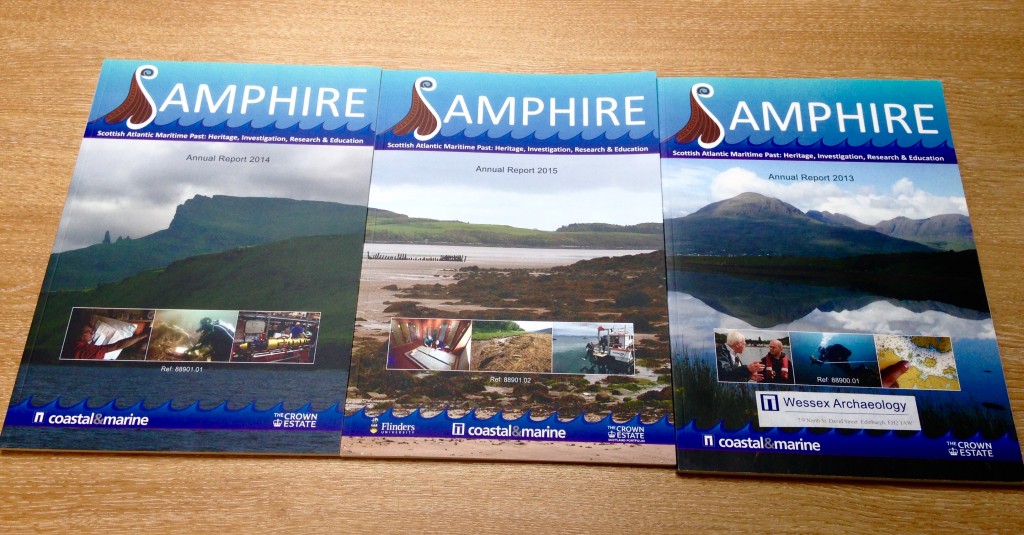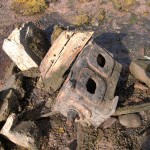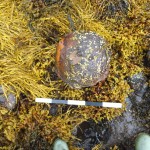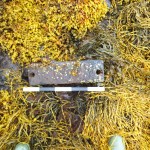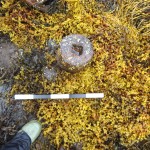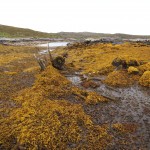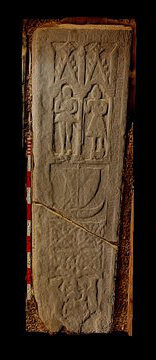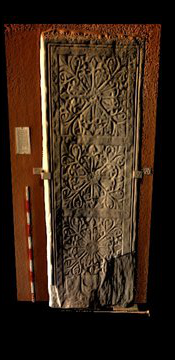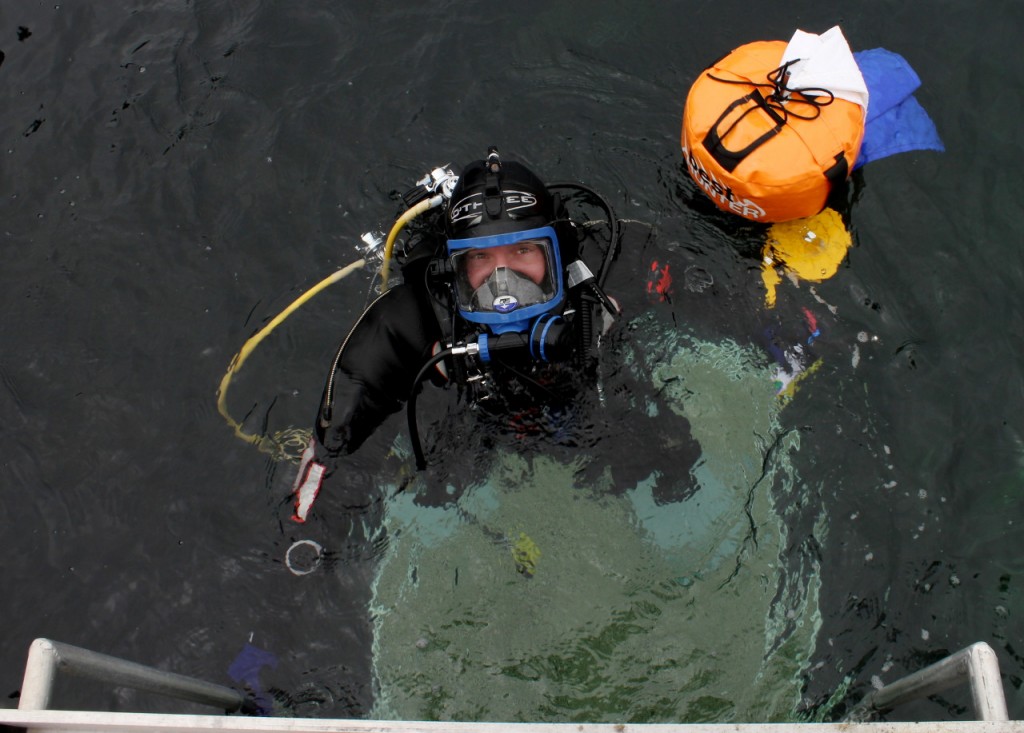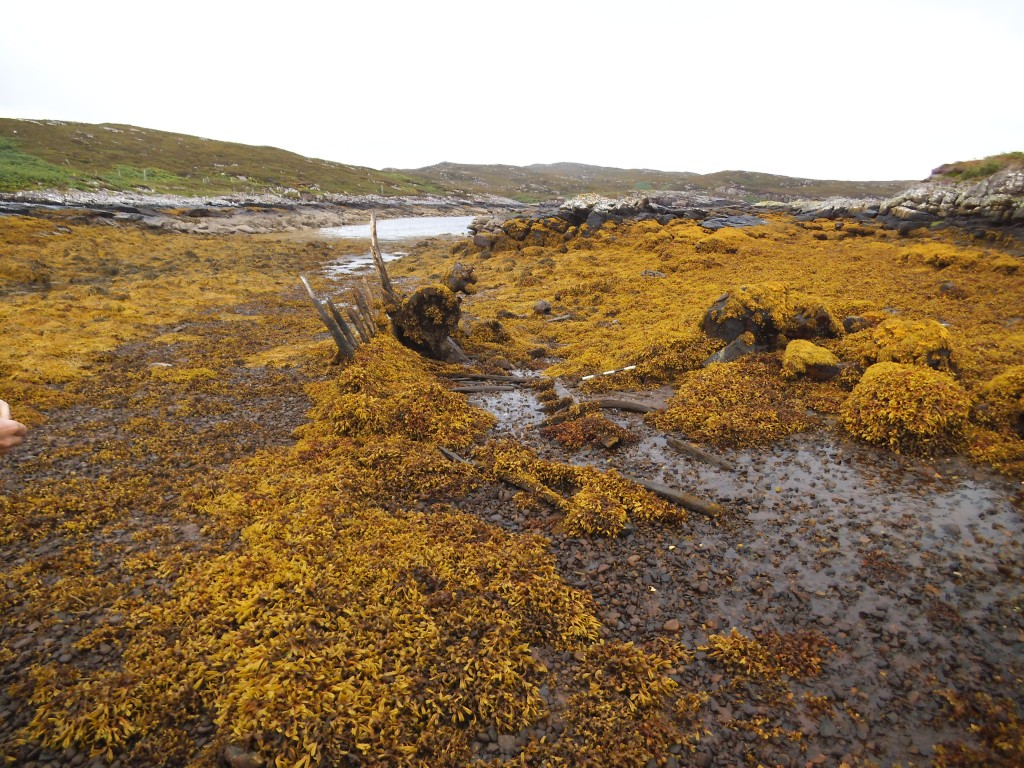 Ahead of the next week’s Archaeological Landscapes: Professional Skills fieldschool at Loch Torridon which is being run by our colleague Andrew Bicket in collaboration with Professor Karen Hardy, the SAMPHIRE project has had some previously unrecorded and very interesting wrecks reported to us at nearby Fearnmore. The initial discovery was sent to us by Karen herself who noticed a spread of wreckage amongst the kelp in the intertidal zone while revisiting some much older Mesolithic archaeological remains nearby. Karen is an expert on prehistoric archaeology but to understand these recent shipwrecks we have called on the assistance of the local community, in particular from our old friend, Shieldaig resident Robert Gordon and also from 75 year old Harris resident Hamish Taylor. Hamish spotted some photos we shared with the West Coast fishing boat group (Past & Present) on Facebook and got in touch to offer his expert advice. Hamish wrote:
Ahead of the next week’s Archaeological Landscapes: Professional Skills fieldschool at Loch Torridon which is being run by our colleague Andrew Bicket in collaboration with Professor Karen Hardy, the SAMPHIRE project has had some previously unrecorded and very interesting wrecks reported to us at nearby Fearnmore. The initial discovery was sent to us by Karen herself who noticed a spread of wreckage amongst the kelp in the intertidal zone while revisiting some much older Mesolithic archaeological remains nearby. Karen is an expert on prehistoric archaeology but to understand these recent shipwrecks we have called on the assistance of the local community, in particular from our old friend, Shieldaig resident Robert Gordon and also from 75 year old Harris resident Hamish Taylor. Hamish spotted some photos we shared with the West Coast fishing boat group (Past & Present) on Facebook and got in touch to offer his expert advice. Hamish wrote:
‘In my upper teens (late 1950s) I spent five idyllic years in North Uist where I worked on small open fishing boats using most kinds of Kelvin Pet/Par engines (except the Kelvin Sleeve)and also occasionally on two twin screw Zulus, one with the 26/30 and 13/15 configuration and did just a couple of trips on a large Zulu with a 60 Poppet on the port side and a 26/30 on the starboard. The age of the Zulu was really past by then and these two boats Maggie Noble and Sickle must have been the last tremors of a dying breed. I got to know Kelvin Pet/Par engines and J and K diesels and their associated idiosyncrasies very well, but it was in the reflection of later and more mature years, away from boats and fishing that I really grew to understood and analyse the interaction of different kinds of boats and their combinations of engines. I retained a lifelong interest in marine engines of that age and still occasionally scan the internet just to gaze in admiration at the Kelvin Poppet, Riccardo and J & K diesels and Gardner diesels’.
Hamish was able to tell us the following about the wreckage in Karen’s photos: ‘the engine still vertical and attached to the frames looks to me to be a 13/15 Kelvin Poppet pertol/paraffin engine. It is offset to starboard, so the boat, probably a Zulu or a Fifie, was twin screw, The other engine lying on its port side looks like a 26/30 Poppet (double the 13/15), which would have been the port engine, and the flat plate uppermost was the mounting plate for the magneto. 26/30 to port and 13/15 to starboard was the usual confirguration. Both engines swung left-handed props, which meant that, particularly in a Zulu, the port engine was almost useless for manoeuvring so the smaller engine (on the starboard side) was used for manoeuvring and the larger engine added in when steaming. Occasionally one might see a Poppet engine on the starboard side and a Kelvin Riccardo (which swung a right-handed prop) on the port side, so either one could be used for manoeuvring… the spherical ball fragments were the water-cooled silencers, but I’m afraid I can’t identify the gear wheels unless they were part of a line-hauler – they certainly were not part of a standard Kelvin Poppet…’. Another old friend of the project, James Corrigall of Portree was able to add that ‘these gear wheels look like they were part of an iron man,they were used for hauling ground nets on the boats that worked the hake cod and coleys a good few year ago.’
We also contacted Robert Gordon as we knew he was familiar with the area from the work we had done with him around Chuaig Bay in 2013. This proved to be a good move as Robert was not only able to go to the site and take a further series of images but was able to make a probable identification of the wrecks and give a brief history of them.
Robert was able to tell us that locals believed the two wrecks to be the Queen and the Sally, the Queen being in better condition and having been put on the beach at the end of WWII while the Sally had been there longer. The Sally (registration TT13) was registered at Tarbert in Loch Fyne and was built in 1902 at Port Bannantyne. It’s deign was that of a Loch Fyne Skiff and it was fitted later with a Kelvin 7-9 hp in August of 1908, later upgraded to a 8-10 hp model. We will continue to research these vessels in collaboration with locals so look out for more information in this year’s report!
